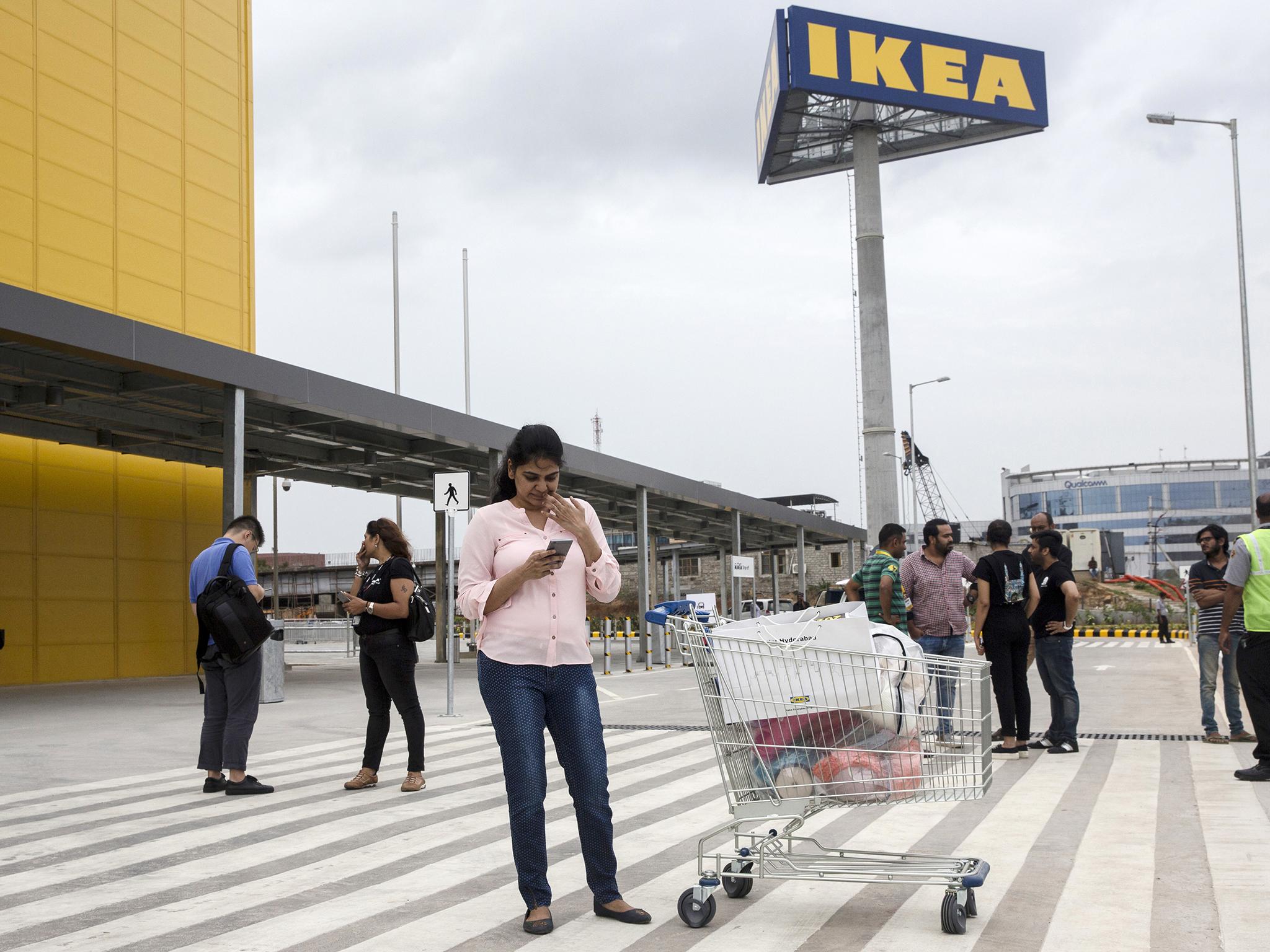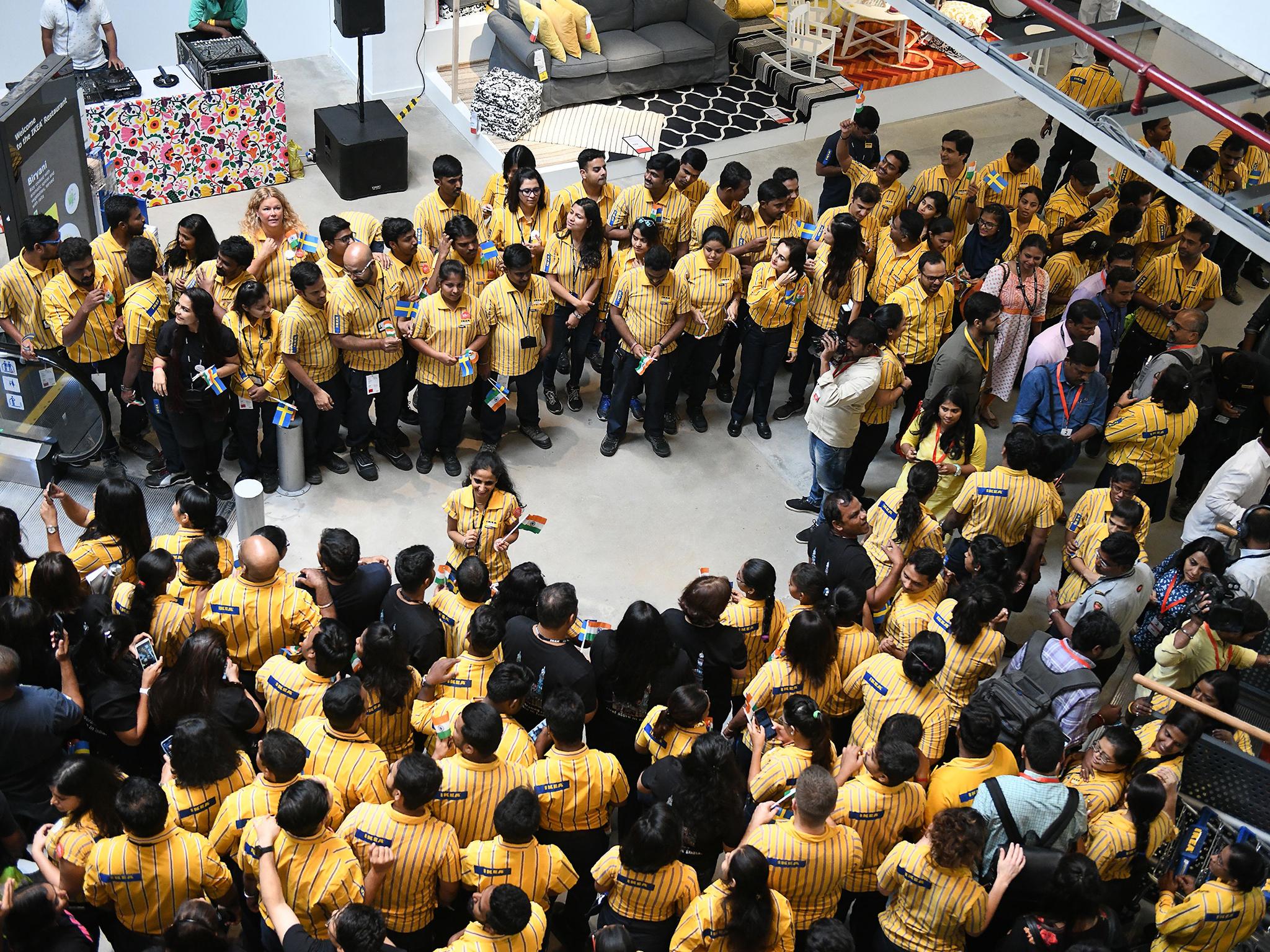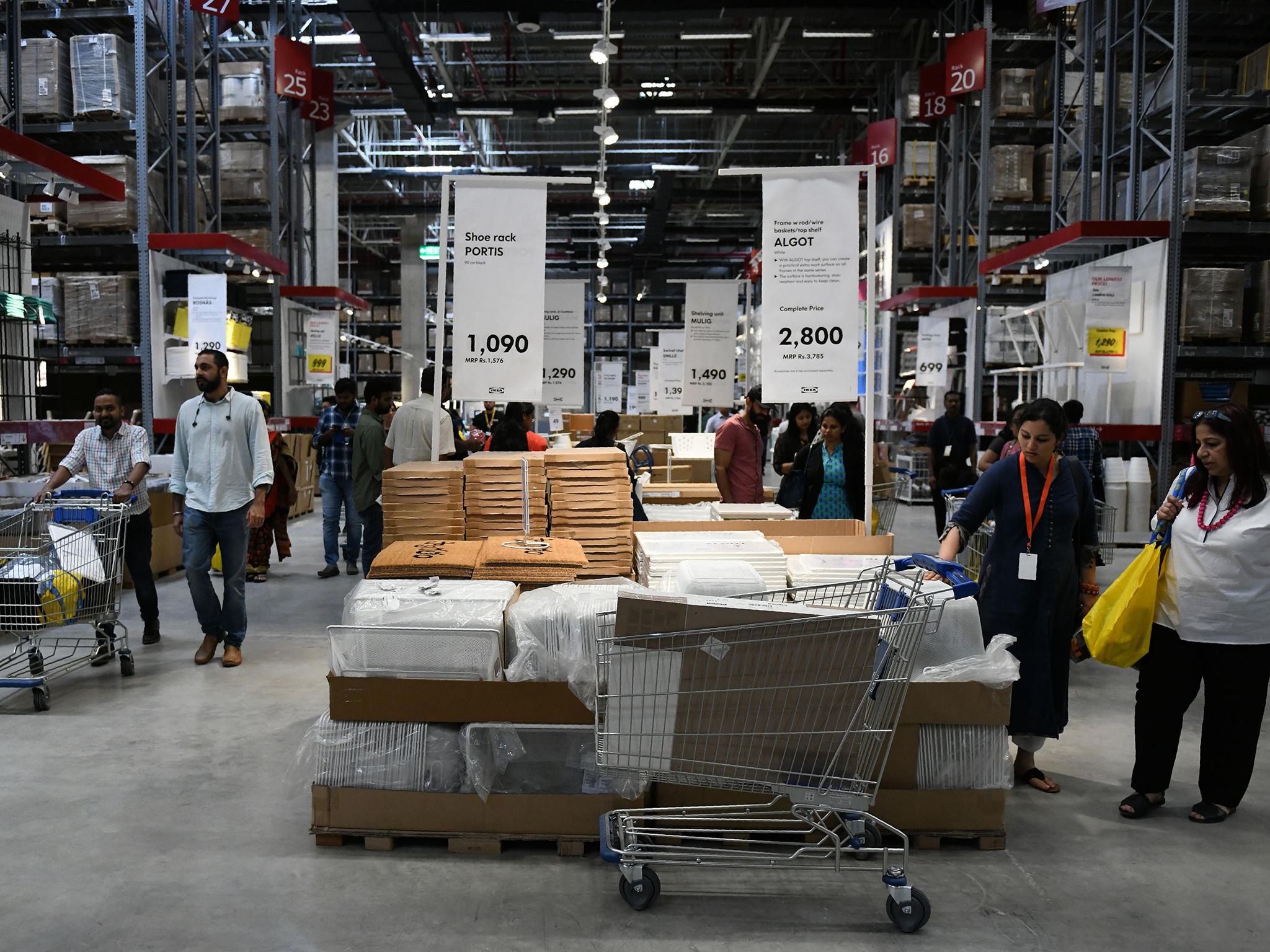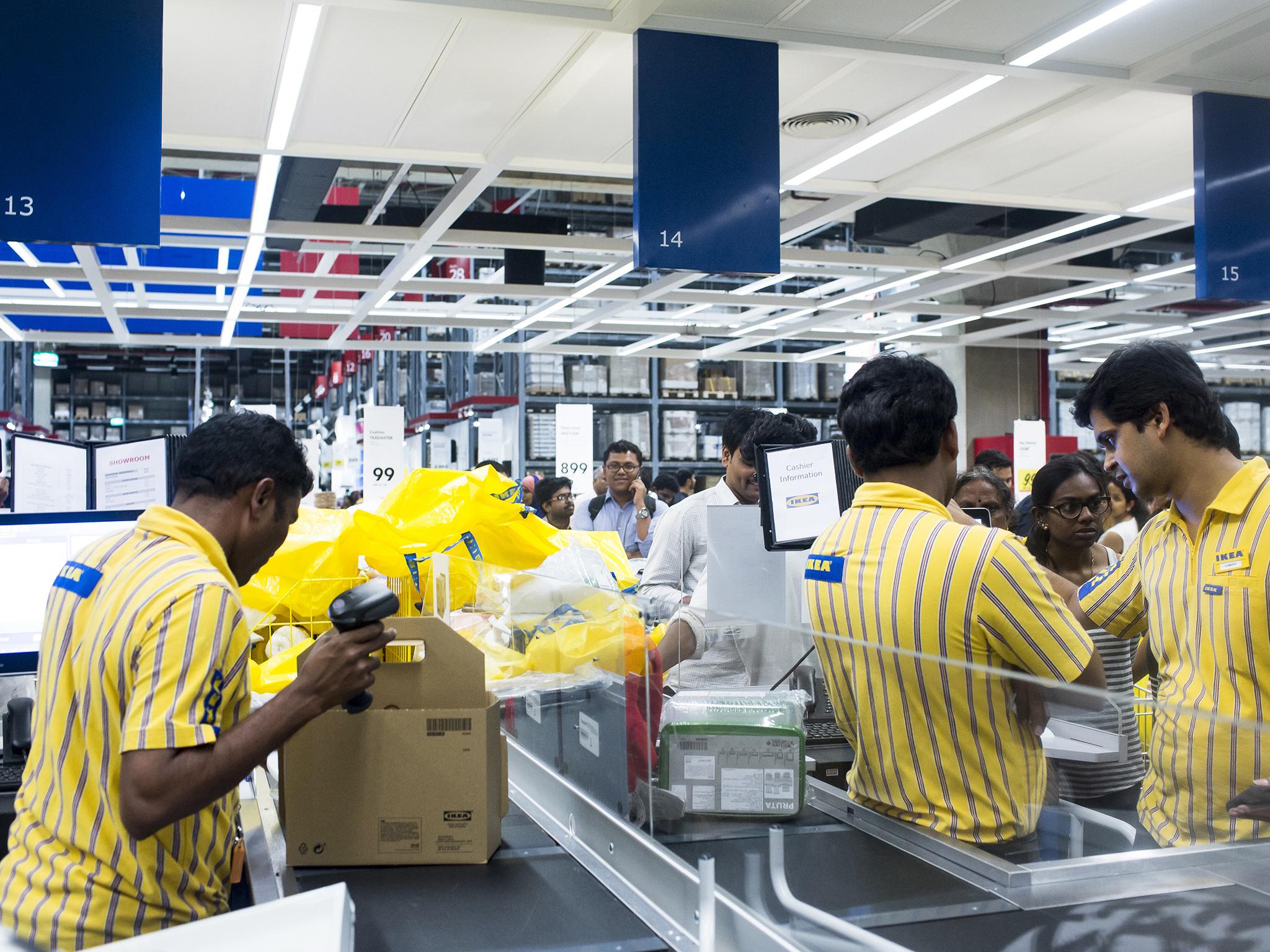Ikea's first store in India is a case study for international retailers
The Swedish furniture giant opened in Hyderabad last month. To appeal to customers, it is cutting prices, offering assembly and selling samosas

Parina Lamba, four, knew what she wanted in the new Ikea store here, the first by the Swedish retail giant in India. She hopped onto a daybed on the showroom floor, lay down and would not get off.
“She didn’t sit on any other bed,” says Parina’s father, Sarav Lamba, one of about 7,000 people to get early access to Ikea’s store a few days before the grand opening.
Lamba was sold. The Hemnes bed was like none other he had seen in Hyderabad, featuring a pullout tray that allows it to become a double bed – perfect for when Parina’s grandmother comes to visit, he says. At 39,970 rupees, or £430, with two mattresses, the price was fair, he adds. And as an engineer, he is looking forward to putting it together with his daughter’s help. “I love DIY,” he says.
Ikea, the world’s largest furniture retailer, is betting that millions of middle and upper-class Indians are similar to the Lambas. Six years after it was first planned, the 400,000 square foot store in Hyderabad is the first step towards fulfilling Ikea’s ambitions in the country, with more outlets scheduled to debut in Mumbai, Bangalore and the Delhi area in the next two years. By 2025, the company hopes to have 25 stores in India, some of them in a new, small format.
Ikea’s opening in India – and its subsequent success or failure – is likely to become a case study for other international retailers.
India’s retail landscape is complex. With a growing middle class, its 1.3 billion people buy about $30bn (£23bn) a year of furniture, lighting and household items like bed linens and cookware, according to Technopak, an Indian consulting firm.
But despite the efforts of a few local chains, 95 per cent of those goods are sold through small shops that offer custom-built products, usually specialising in one category such as wooden furniture or lamps, and free assembly and delivery.
“The consumer in India is kind of pampered,” says Ankur Bisen, who heads Technopak’s retail and consumer products division.
Ikea stores are the polar opposite. Part showroom and part warehouse, they are sprawling outlets that are far from city centres with mazes of giant bins and floor-to-ceiling shelves. Ikea’s brand signals affordable, mass-produced and functional, and its design aesthetic is lightweight and lean, in contrast to the heavier, bulkier furniture traditionally favoured in Indian households.

Yet Ikea, with its reputation for good value, also appeals to the bargain-hunting nature of the Indian shopper.
“In India, a lot is driven by the price of the goods and not so much about the quality,” says Anil Talreja, a partner at Deloitte’s India arm who works with retailers.

All of this has forced Ikea to rethink its product lineup and store operations for India. Although the Hyderabad store has the classic Ikea layout, what’s on display is somewhat different.
Given India’s lower income levels, the store features hundreds of products – from dolls to spice jars – priced at less than 100 rupees. In some cases, Ikea is selling a product in India for less than it charges elsewhere. In other instances, the company is tailoring it for local tastes. For example, most Indians do not use knives to eat and primarily want spoons, so the company ditched its children’s plastic cutlery packs and instead sells four spoons for 15 rupees.

Ikea employees also visited about 1,000 homes in various cities to understand how people lived and what they needed. Indian families spend a lot of time together, with relatives frequently popping in, so the company added more folding chairs and stools that could serve as flexible seating.
Indian women are also shorter than Europeans and Americans, so the company decided to showcase some cabinets and countertops at lower heights. And with children often sleeping in the same room as their parents until they are in elementary school, its model bedroom squeezes in a child’s bed amid all the other furniture.

“We want to be as relevant as possible,” says Nick Elliott, an Australian who heads interior design for Ikea’s Hyderabad store. Even the cafeteria caters to Indian tastes, with biryani, samosas and vegetarian Swedish meatballs on the menu and 1,000 available seats, more than any other Ikea in the world, to accommodate the more leisurely dining style of Indian families.
Figuring out how to adapt Ikea’s furniture was more difficult. Some items popular in the United States, such as untreated pine furniture, do not endure in south India’s hot and humid climate. Metal or wooden furniture needs small risers to lift it off the floor because people frequently clean their floors with water.
In Hyderabad, Ikea is in an area known as Hitec City, where thousands of new apartments are going up and multinational tech companies like Amazon, Dell, Capgemini, Tech Mahindra and Deloitte have offices. Many customers at the store last weekend worked at those companies or were familiar with Ikea from other countries.
In the city’s traditional furniture district, Nampally, furniture sellers say they are not worried about Ikea stealing their business. The new store will get people excited about buying furniture, they say, and customers will come to check out the local options, too.
Srinithdas Mundhada, whose 45-year-old store sells metal furniture like storage cabinets and cheap plastic chairs and stools, says that he and his family have already become adept at competing with big foreign-owned retailers.
“We are cheaper than Amazon,” he says. “We welcome Ikea with a warm heart.”
© New York Times
Join our commenting forum
Join thought-provoking conversations, follow other Independent readers and see their replies
Comments
Bookmark popover
Removed from bookmarks